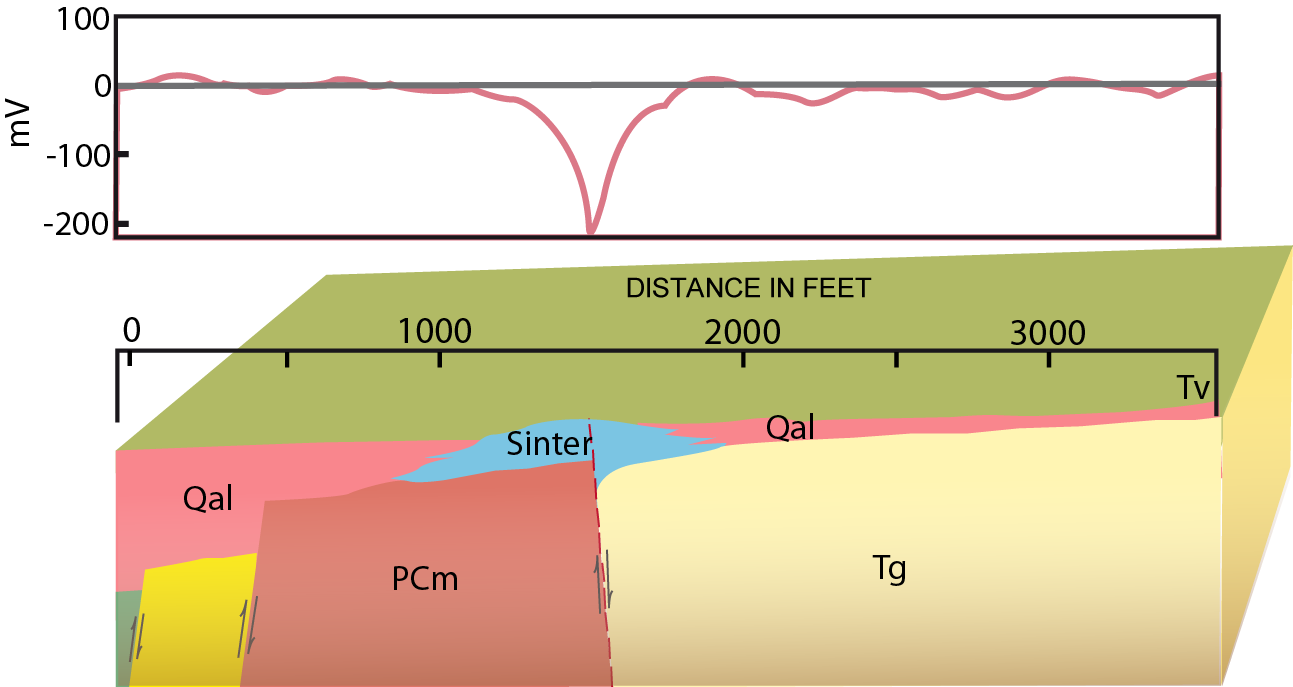SPONTANEOUS POTENTIAL
The spontaneous potential method (also called self-potential) is an electric prospection method that has its origin in the search for mineral resources, even though its use has been also used in civil and environmental engineering, resulting in a useful tool for analyzing filtration problems underground.
It is based in the measurement of different and natural electric potential between two points over surface or at a low depth. The first registers of spontaneous potential (PE) have been made by Fox in 1830, who, by using two copper plates as electrolytes connected to a galvanometer, detected the existence of copper sulphide subterranean deposits in Cornwall, England.
This technique has been used utilized as a complement for the prospection of metal deposits up to the 20’s, especially for the detection of massive bodies, in contrast to induced polarization, used in the exploration of disseminated deposits. In recent years, the PE has extended to some hidrogeological and geothermic investigations, also geologic, mostly to locate fracturization zones near the surface.
SP registers, both for its required equipment and its cost, are the simplest and most accessible of geophysical prospection methods applied from the surface.
It is based in the measurement of different and natural electric potential between two points over surface or at a low depth. The first registers of spontaneous potential (PE) have been made by Fox in 1830, who, by using two copper plates as electrolytes connected to a galvanometer, detected the existence of copper sulphide subterranean deposits in Cornwall, England.
This technique has been used utilized as a complement for the prospection of metal deposits up to the 20’s, especially for the detection of massive bodies, in contrast to induced polarization, used in the exploration of disseminated deposits. In recent years, the PE has extended to some hidrogeological and geothermic investigations, also geologic, mostly to locate fracturization zones near the surface.
SP registers, both for its required equipment and its cost, are the simplest and most accessible of geophysical prospection methods applied from the surface.

MAIN APPLICATIONS
- Geological investigations
- Geothermic studies
- Environmental and pollution plumes studies
Geofísica Argentina © - 2015 - (All rights reserved)
Address: Bº UDAP II Mna F C17 - Rivadavia - San Juan - Argentina
Phone numbers:
+54 9 264 4854870 - +54 9 264 5883048 - +54 9 264 5318547
E-mail: info@geofisicaargentina.com
Address: Bº UDAP II Mna F C17 - Rivadavia - San Juan - Argentina
Phone numbers:
+54 9 264 4854870 - +54 9 264 5883048 - +54 9 264 5318547
E-mail: info@geofisicaargentina.com
Web design: Pica Estudio




